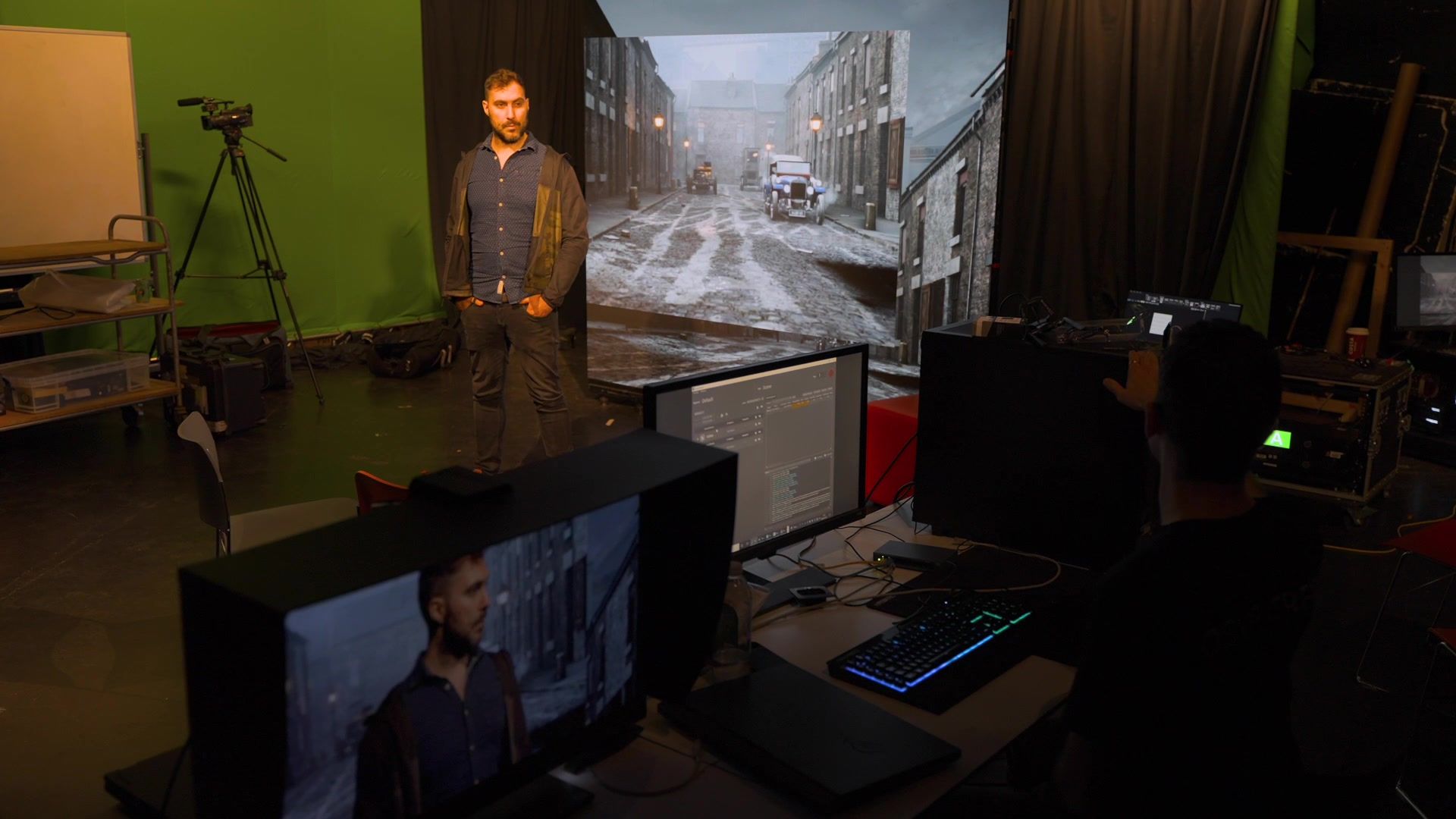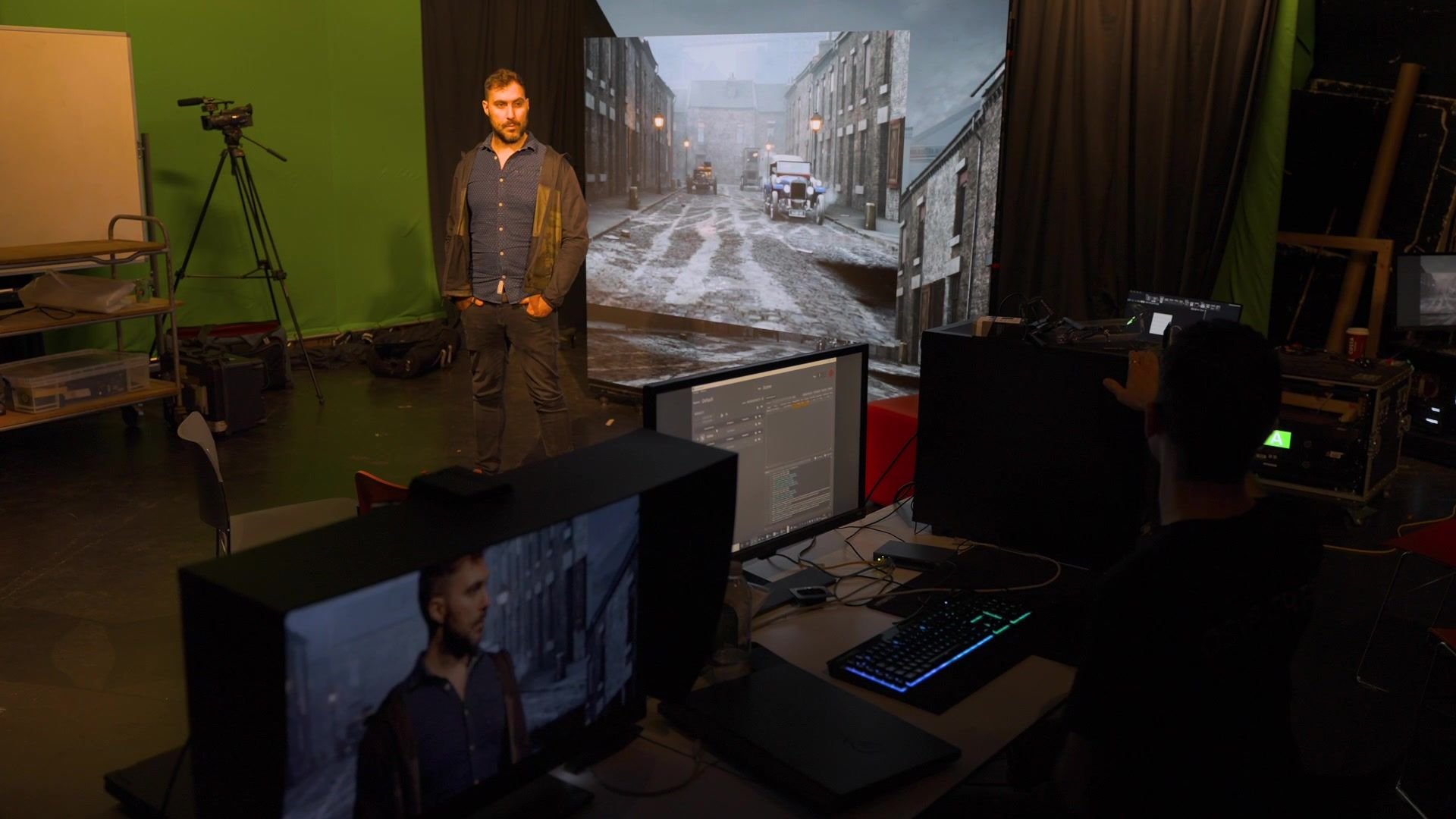
Colour accuracy is crucially important when it comes to virtual production. We have a look at how global virtual production studio Final Pixel uses ASUS ProArt monitors to ensure colour accuracy throughout its pipeline.
Training with Final Pixel
Final Pixel is a global creative studio specializing in virtual production for film, TV, and advertising. Launched in 2020, it blends realistic 3D worlds with real-world sets to create photoreal and cinematic environments in real time. Alongside all this, Final Pixel has also established a training arm called Final Pixel Academy. This offers hands-on courses where technicians, producers, and directors have the opportunity to attend masterclasses, seminars, and in-person LED volume teaching to gain practical knowledge of the technology used in virtual production.
Michael McKenna, the CEO and Director of Virtual Production at Final Pixel explains how new hardware innovations and the growing amount of volume stages are changing the industry: “There's more hardware out there, there are more stages popping up, but also crucially, producers and filmmakers and creatives are really seeing the potential of it and they're seeing how it can really reshape their creative ideas and allow them to do things that they couldn't have done otherwise,” he says.
Watch here how Final Pixel implements training at Buckinghamshire University
Importance of colour
The virtual production pipeline usually starts with the image being manipulated within the VP workstation, where it is rendered at the necessary resolution. The picture is then sent to a switcher which sends the signal to the color processor, which finally displays the image onto the LED panels.
Since the image goes through different stages in the virtual production pipeline, the colour of the image needs to stay consistent. Dominic Maher is the Stage Operator for Final Pixel and knows just how important color accuracy is on set: “We put a lot of effort into maintaining that color every stage of the process and if it falls down to the point of the reference monitor, which we're all looking at, it's a huge problem for us," he says.
To ensure Final Pixel has a color-accurate image on set, the company uses the ASUS ProArt Display OLED PA32DC monitor as its reference monitor. The monitor has a premium OLED panel with RGB stripes that supports both high levels of brightness and true blacks. With true 10-bit color and 99% DCI-P3 color gamut, Final Pixel can be assured that what its staff is seeing on set is what is shown on the monitor at every stage of the production process

Stitching everything together
To be able to blend together the live-action and game engine footage, Final Pixel uses a different ASUS monitor, the ASUS ProArt Display PA32UCG, during the post-production process. The monitor goes up to 1600 nits peak brightness, which enables Final Pixel to match or even exceed the brightness offered by the LED walls. Working with game engines such as Unreal Engine, Maher says how it is important to have a monitor that is also powerful enough to render as high frame rates as possible. Final Pixel is often filming at 25fps during the pre- and post-production process, and having a monitor that has a refresh rate of up to 120Hz makes the post-production process incredibly efficient for Unreal Engine technicians.
Blending game technology with traditional filmmaking methods, virtual production allows directors and producers to work with live actors inside digital environments. With a strong background in gaming motherboards, ASUS has an advantage when it comes to stitching real-world environments together with game engines.
Any studio location anywhere in the world
Virtual production studios are growing in number as we speak. LED walls are being built in the morning and taken down by the end of the day. Being able to set up a virtual production studio in the morning and take it down in the evening is not a rare occasion anymore. Therefore, creative studios need to have scalable but also portable technology solutions anywhere they go.
As a global company, Final Pixel uses equipment that it can take with them anywhere it goes. The ProArt Display OLED PA32DC comes with a built-in auto-calibration tool, which is useful when working in different locations. It saves time and gives Final Pixel the confidence and reassurance that what they are seeing on the monitor is what they should be seeing - and so is everyone else. The monitor is also ergonomically built to travel with a handle in the back and multiple connection ports on both sides of the display. This makes the monitor agile to carry and quick to set up in different studio locations and that is why Final Pixel uses these monitoring solutions anywhere they go.
“This technology is hugely scalable and portable in the sense that we can bring all that into the studio, set up swiftly, and begin teaching people how to use virtual production,” concludes McKenna.
Tags: Monitors Virtual Production


Comments